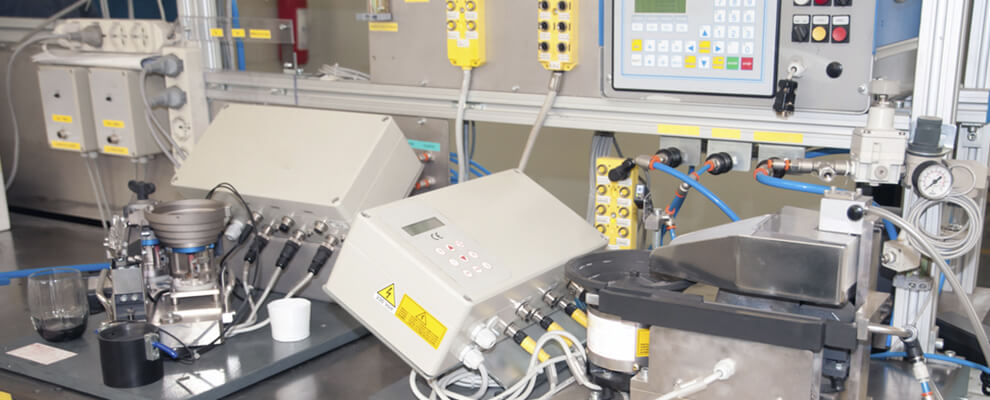
The Role of Automated Test Equipment in Auto Manufacturing
Testing is essential for quality assurance. However, the traditional method of testing components manually before ramping up production simply won’t suffice anymore. The auto industry is changing rapidly, and your business has to keep up. Automated testing is the best approach to use going forward. Consider the role that automated testing plays in the automotive manufacturing industry and the benefits of switching to automated testing.
Accelerating the Prototyping Process
New vehicle designs call for new components to be developed from scratch. With EVs, for instance, there are unique powertrain components such as regenerative brakes and battery packs that require complex wiring harnesses and safety components. Autonomous vehicles rely on an assortment of sensors and cameras, as well as a more advanced computer to process data in real time. As an auto components supplier, your company can secure valuable contracts if you can quickly design and produce these novel components.
Automated testing systems help you prototype faster. You can immediately take a finished prototype and put it into an automated test chamber to subject it to a battery of tests. Automation allows you to complete these tests much faster than if a human had to operate systems manually. You can find flaws in your designs faster and improve them so that you can offer the best possible alternative to the auto manufacturer before anyone else.
Meeting Regulatory Requirements With Fewer Man Hours
Vehicles have stringent safety regulations that extend to the individual components used in the car. The more vital the part, the more testing it must undergo. For example, airbags have some of the most demanding testing requirements, as they not only have to deploy properly to protect the passenger, but must also avoid going off at other moments. In order to produce these important parts, you have to prove that yours meet these high standards.
Vehicle software testing is also paramount as the average car contains over 100 million lines of code. Both physical and virtual testing can be automated and executed much faster than if you performed them by hand. Physical tests can repeat specific movements at regular intervals. When a failure occurs, the test stops and data is recorded. Virtual tests can simulate how code will respond in adverse scenarios such as a deliberate hack attempt or an accidental bit flip.
Improve Your Position in the Market With Tighter Tolerances
Another advantage of automated test equipment is that you can perform your tests to a higher degree of precision. When humans operate machines, they introduce an element of uncertainty to every test. Even machines that operate autonomously with human input are susceptible to error if they aren’t regularly calibrated. Automated testing eliminates these problems, which means you can produce parts that have tighter tolerances and longer useful lives.
When your company becomes known for producing the best components, you will set yourself apart from the competition. Contracts get renewed and orders get increased. Supplier failures lead to shutdowns on assembly lines and result in delivery delays. Those problems cost car manufacturers millions, and end supplier relationships quickly. Position your company for long-term growth by producing better components with automated testing.
Data Logging and Analysis
The more data you have, the better your products will be. Automated testing captures data more consistently and efficiently than human testers. Individuals may forget to log data or fail to upload it to where it should be stored. An automated system will log data at high frequencies and deposit the final results wherever you prefer without fail. Consistent data logging means you won’t have to redo tests because someone forgot to save data, saving you valuable time and money.
You can then analyze that data to identify performance trends in your products. As testing progresses, you’ll learn where failures tend to occur across a variety of conditions. Intelligent data analytics software for engineering can even recommend changes to your design to address those failures if you need to improve your part’s quality before mass production. Just a higher resolution on a camera produces better images, increased data logging from automated testing produces better products.
Integration With Model-Based Engineering and Design
Another tool that is quickly taking over the automotive world is model-based Engineering, or MBE. With MBE, automotive engineers design the whole vehicle using a digital model. Each component of the model is then dynamically linked with specifications and expected performance standards. Automated testing methods integrate well with the MBE approach since the requirements from the manufacturer can be fed directly into your automated testing system. This reduces the chances of typos or other mistakes when evaluating your components.
Overall, switching to automated testing allows you to perform tests faster, which means less time spent watching and repeating tests, and more time spent on activities that add more value to your business. Speeding up testing tightens the entire development cycle and makes your company more competitive. To use this new technology, you’ll need to undergo a full digital transformation. Look for digital transformation experts that can take your industrial enterprise to the next level.
If you’re seeking technology solutions, we have the answer. Reach out to SAAB RDS to explore how we can revolutionize your business and keep you ahead of the competition.
